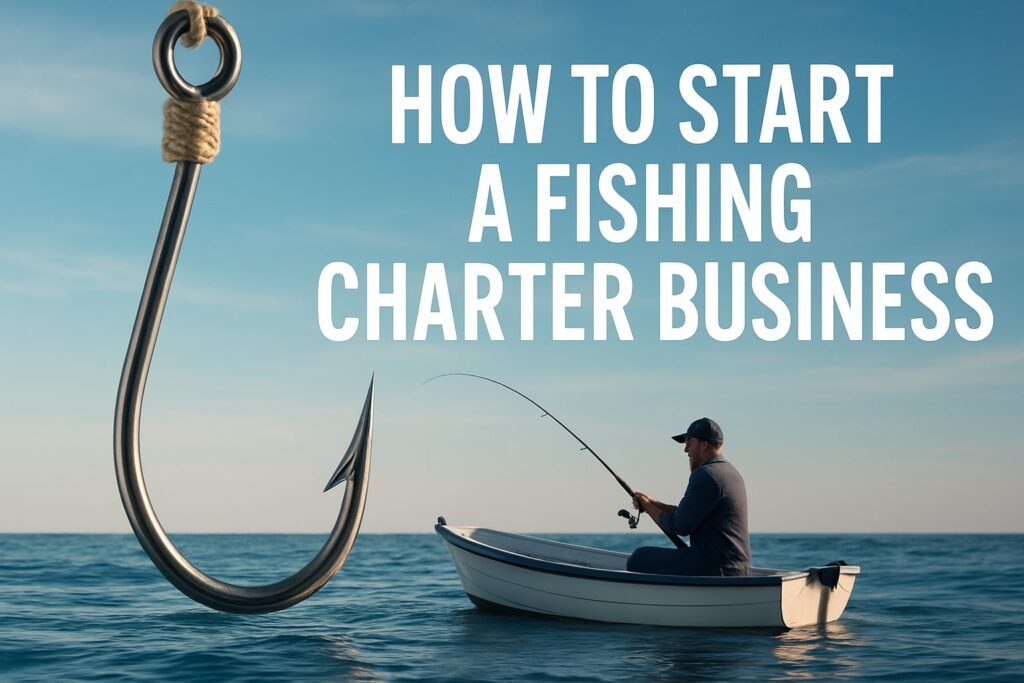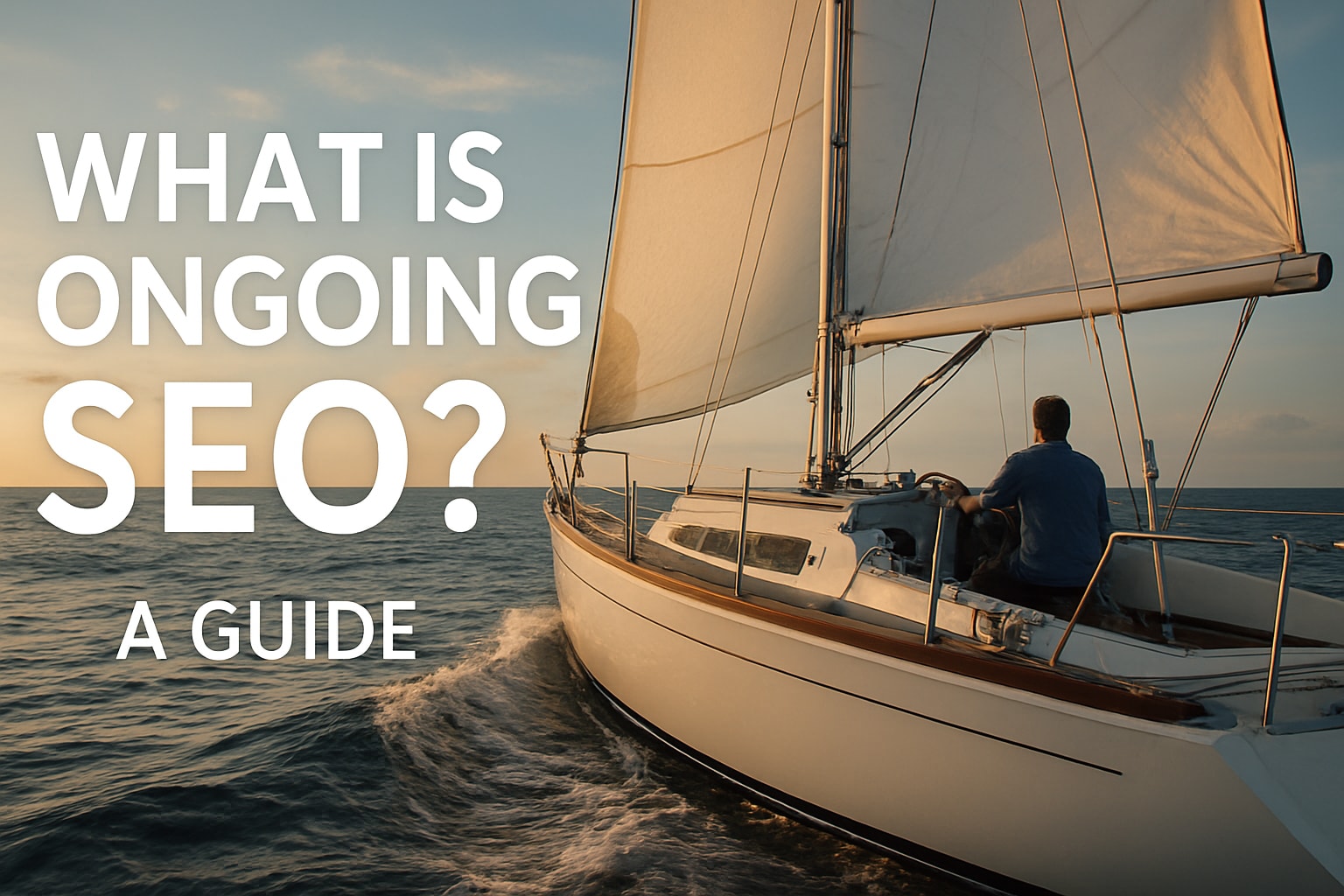Imagine waking up to salt air, sun on the water, and the knowledge that your next fishing trip is actually your business. For many, that’s the dream. Today, the demand for guided fishing adventures is booming, and more marine entrepreneurs are wondering how to start a fishing charter business that not only survives, but thrives.
There’s a lot to love about this industry. Not only can you earn a great living doing what you enjoy, but you’ll also meet people from all walks of life, share your passion, and spend your days on the open water. The best part? With the right strategy, your charter business can run year-round and build real value.
This expert 2025 guide walks you through every step, from market research and legal setup to choosing the right fleet, building a brand, and delivering unforgettable customer experiences. Along the way, you’ll get insider tips, proven marketing tactics, and the latest regulatory updates—everything you need to navigate the challenges and launch with confidence.
Ready to chart your course? Let’s dive in.
Step 1: Researching the Fishing Charter Market
Kicking off your journey on how to start a fishing charter business means diving deep into research. The right groundwork sets the stage for sustainable growth, smart investments, and a charter operation that stands out in a crowded market.
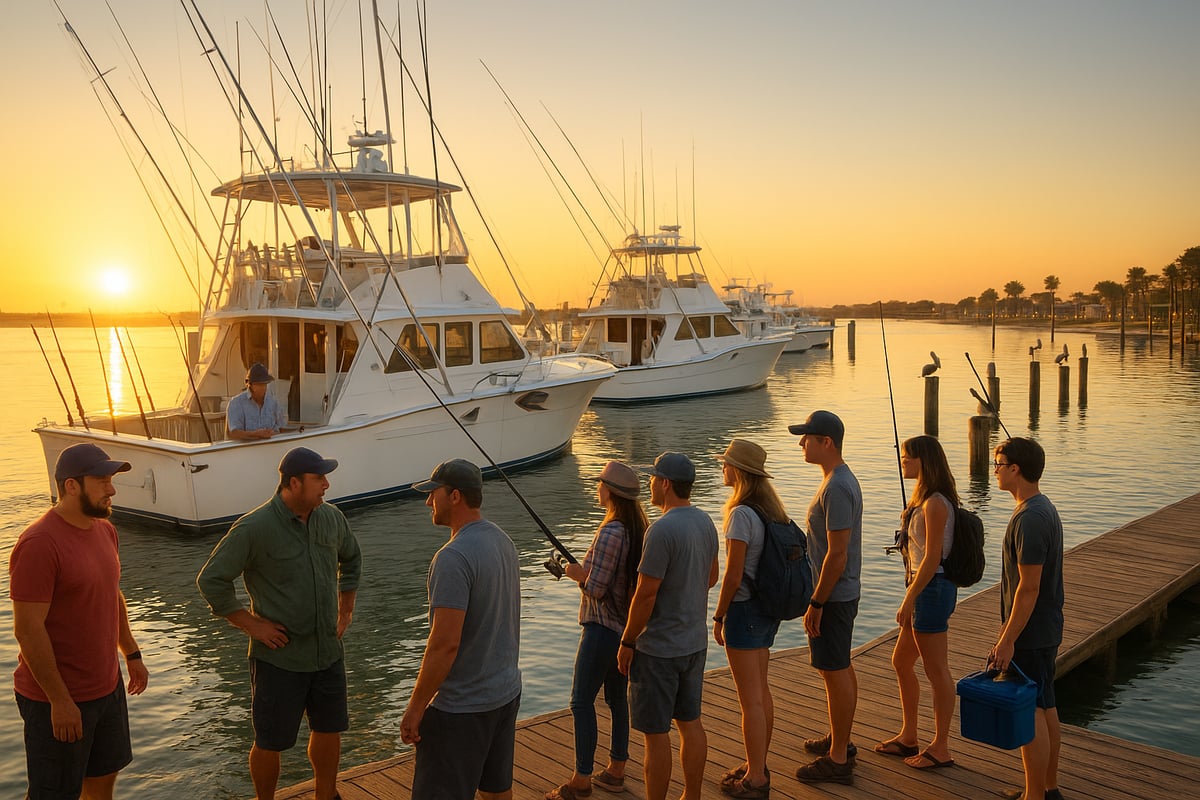
Understanding Local Demand and Competition
Start by assessing your area’s appetite for fishing adventures. Analyze tourism data, local fishing popularity, and seasonal visitor spikes. Review what other charter operators offer: pricing, trip lengths, and special services. Use stats from local tourism boards or Fish and Wildlife agencies to gauge market size.
For example, Florida’s recreational fishing industry reached $7.5 billion in 2023, making it a hotspot. To get granular, dig into resources like the Fishing Boat Charter Industry Report for insights on market trends and competitive benchmarks.
Look for gaps—maybe family-friendly trips are underrepresented, or there’s demand for eco-charters. Read customer reviews to spot what current operators might be missing. This is the first crucial step in how to start a fishing charter business.
Defining Your Target Audience
Nailing down your ideal customer is a must for anyone learning how to start a fishing charter business. Are you aiming for tourists, locals, corporate groups, or die-hard anglers? Think about age ranges, fishing experience, and group sizes.
Tailor your trips accordingly. For instance, family-friendly charters with lessons and kid-safe gear appeal to vacationers, while hardcore deep-sea expeditions attract seasoned anglers. Social media groups and fishing forums can help you gauge real-world interest and uncover trending preferences.
Choosing Your Niche and Services
Choosing a niche is where your vision for how to start a fishing charter business takes shape. Decide if you’ll focus on inshore, offshore, fly fishing, or even night trips. Consider add-ons like equipment rental, lessons, catering, or wildlife tours.
Specialty trips—like shark fishing or eco-tours—can help you stand out. Analyze which services are most profitable in your region and see what competitors are missing. Maybe your area needs luxury charters or themed adventures. Unique offerings become your competitive edge.
Forecasting Revenue and Costs
Understanding the numbers is essential for how to start a fishing charter business with confidence. Estimate startup and recurring costs: boats, insurance, fuel, permits, and marketing. Project income based on trip frequency, group size, and local pricing.
Factor in seasonal highs and lows, plus weather-related risks. For instance, daily charter rates in the US average from $400 to $1,200, depending on the trip type and region. Use competitor data and industry reports to set realistic expectations and avoid surprises.
| Expense Category | Startup Cost Estimate |
|---|---|
| Vessel purchase | $50,000–$200,000 |
| Equipment | $5,000–$20,000 |
| Insurance | $3,000–$7,000/year |
| Permits/Licenses | $500–$2,500 |
Regulatory and Environmental Considerations
Regulatory knowledge is non-negotiable for anyone serious about how to start a fishing charter business. Stay up to date on fishing regulations, catch limits, and protected species. Understand all local, state, and federal requirements that apply to your operation.
Sustainable practices, like catch-and-release or eco-certifications, not only protect the marine environment but also appeal to modern customers. For US waters, NOAA regulations are a must-watch. Assess your environmental impact and ensure compliance to build trust and avoid costly fines.
Step 2: Legal, Licensing, and Insurance Essentials
Launching your charter is about more than just buying a boat and setting sail. To truly master how to start a fishing charter business, you need a rock-solid legal foundation. This step covers your business structure, captain’s credentials, vessel compliance, insurance, and risk management—so you can operate with confidence from day one.
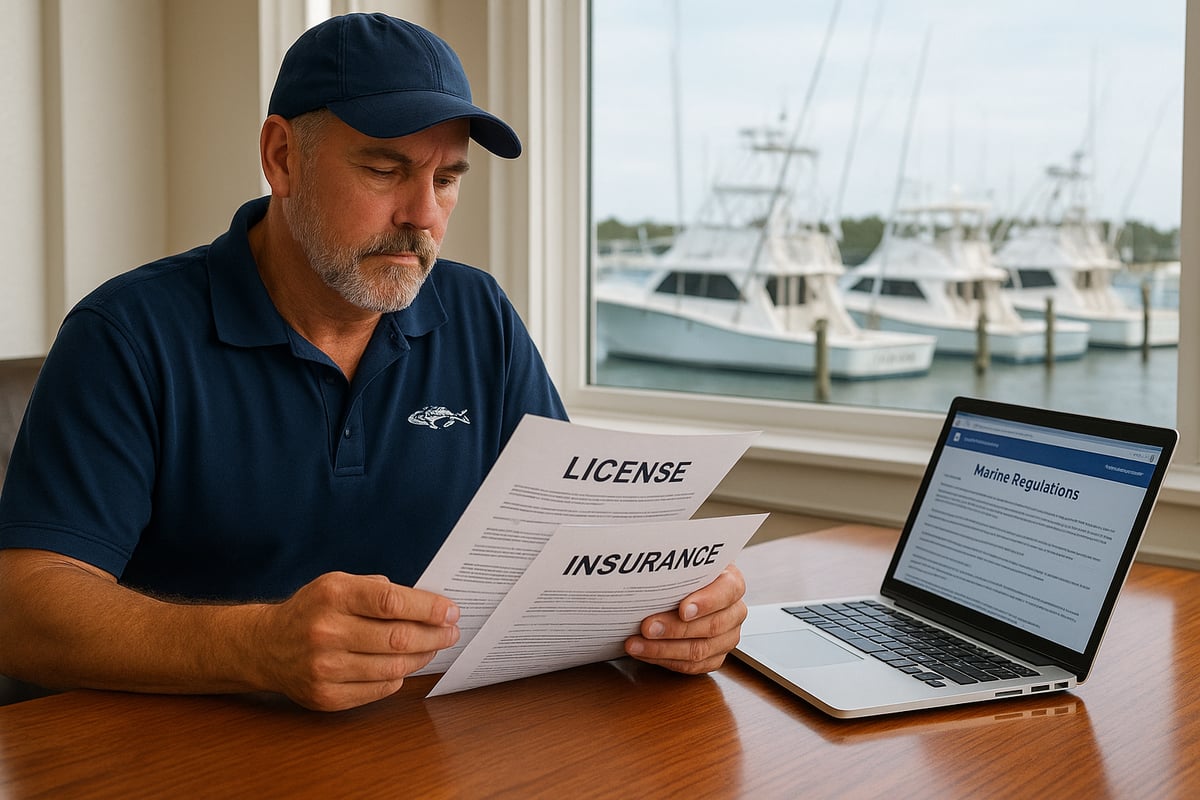
Registering Your Business and Choosing a Structure
The first step in how to start a fishing charter business is to pick a business structure that fits your goals and protects your assets. Most marine entrepreneurs choose between an LLC, corporation, or sole proprietorship.
- LLC: Offers liability protection and separates personal and business assets. It’s popular for charters because it shields your personal property if something goes wrong.
- Corporation: Best if you plan to scale or seek investors. More paperwork, but robust protection.
- Sole Proprietorship: Easiest to set up, but leaves you personally liable for debts or lawsuits.
Check your state’s specific requirements for marine businesses and always keep your personal and business finances separate.
Obtaining Captain’s Licenses and Permits
You can’t operate without the right credentials. For most U.S. waters, you’ll need a USCG OUPV (Six-Pack) license or a Master Captain’s license, depending on your vessel and passenger count. Requirements include documented sea time, passing a written exam, and completing a medical screening.
On top of federal credentials, research state and local fishing permits. These vary widely—some require annual renewals or special endorsements for guiding tourists. For a deeper dive on legal requirements, check out this how to start a fishing charter business guide, which covers licensing, equipment, and marketing to tourists.
Stay organized: keep digital and paper copies of all your licenses and permits, and set reminders for renewals.
Boat Registration, Inspection, and Compliance
Every vessel used in how to start a fishing charter business must be registered with state and, in some cases, federal agencies. Registration covers your hull identification, insurance verification, and tax compliance.
Before you take passengers, schedule a Coast Guard safety inspection. Inspectors will check for life jackets, fire extinguishers, distress signals, and emergency protocols. Inspections may be annual or biannual, depending on your region.
Don’t overlook accessibility. Compliance with ADA guidelines means your charter is open to more customers and avoids legal headaches.
Insurance Requirements and Coverage Options
Insurance is non-negotiable when you’re figuring out how to start a fishing charter business. The right policies protect you, your crew, your passengers, and your investment.
Here’s a quick breakdown:
| Insurance Type | What It Covers | Typical Cost (Annual) |
|---|---|---|
| Liability | Customer injury, property loss | $3,000–$7,000 |
| Hull | Damage to your vessel | Varies by value |
| Passenger | Medical claims, accidents | Included in liability |
| Crew | Work injuries | Required in some states |
| Pollution | Fuel spills, environmental risk | Optional but smart |
Work with a broker who understands marine businesses to tailor coverage to your operation.
Risk Management and Legal Pitfalls
Even with the best planning, things can go sideways. That’s why risk management is crucial in how to start a fishing charter business.
Always have customers sign waivers and liability releases before boarding. These documents should clearly explain the risks involved in fishing charters and outline your policies for injuries or lost property.
Stay current with laws and insurance renewals—missing a deadline can void your coverage. Review real-world cases of charter operators who avoided lawsuits by enforcing strict safety protocols and keeping excellent records.
A proactive mindset keeps your business protected and your reputation strong.
Step 3: Building Your Fleet and Outfitting Your Business
Choosing the right fleet and outfitting your operation is a make-or-break step when learning how to start a fishing charter business. Every decision now impacts guest satisfaction, safety, and profitability for years. Let’s break down what you’ll need to create a reliable, sought-after charter experience.
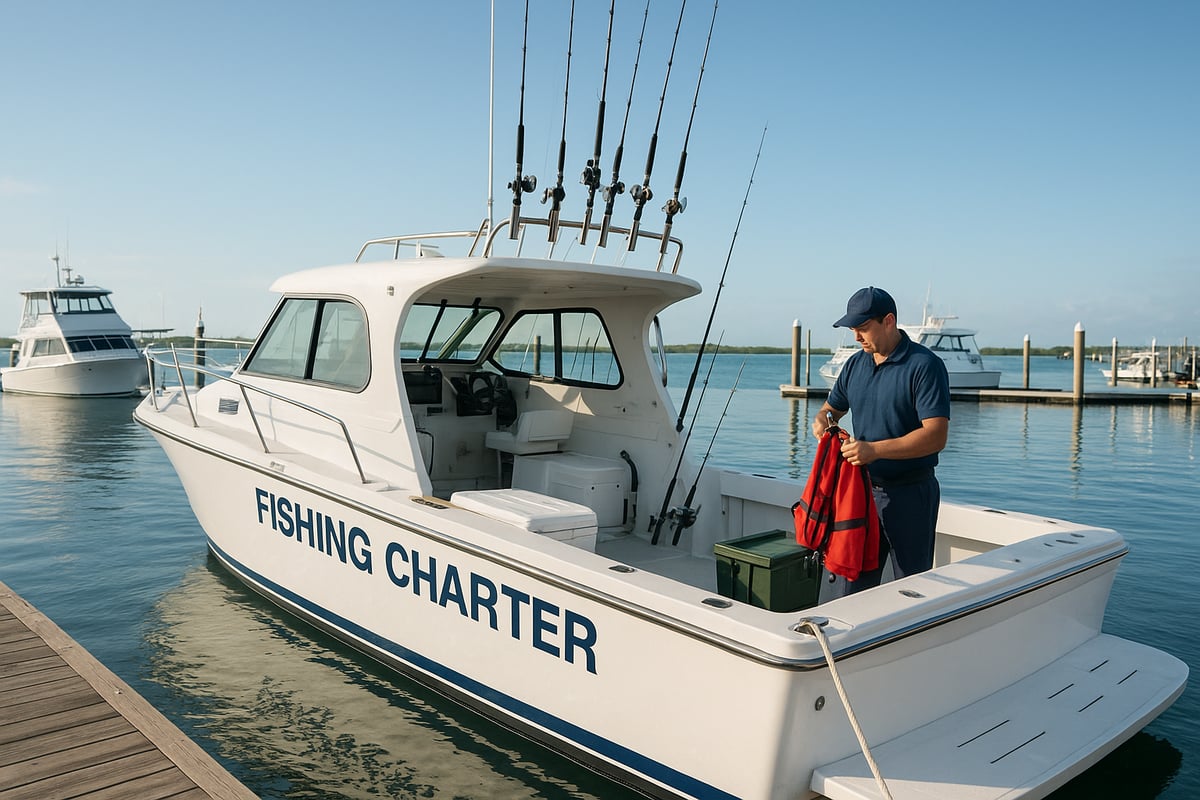
Selecting the Right Boat(s) for Your Charter
Boat selection drives your brand. For how to start a fishing charter business, weigh new versus used vessels. New boats offer warranties and the latest tech, but used models can cut startup costs. Think about your charter type—center consoles are top picks for inshore trips, while sportfishers excel offshore.
Key boat considerations:
- Passenger capacity and comfort
- Amenities like restrooms and shaded seating
- Fuel efficiency and range
Popular 2025 models include advanced electronics and improved hull designs. Always factor in resale value and maintenance. For a deep dive on costs, check the Startup Costs for Fishing Trip Business guide.
Outfitting for Safety and Customer Experience
Safety is non-negotiable. Outfitting your boat with Coast Guard–approved life jackets, EPIRBs, and first aid kits is essential for how to start a fishing charter business. On top of that, comfort upgrades—like padded seating, sunshades, and clean restrooms—turn a good trip into a great one.
Don’t skimp on fishing gear. Stock quality rods, reels, electronics, and bait tanks. Modern fish finders and GPS units help both your crew and clients. These touches set your service apart, signaling professionalism and care.
Maintenance, Storage, and Upkeep
Keeping your fleet shipshape is core to how to start a fishing charter business. Engines, hulls, and electronics all need routine checks. Set a maintenance schedule, and log every service. Consider your docking and storage options—marina slips, dry stack, or moorings—based on budget and convenience.
Average annual maintenance costs can run from $2,000 to $10,000, depending on boat size and local rates. Off-season? Use that time for repairs, cleaning, and upgrades. Staying proactive reduces surprise expenses and keeps your operation running smoothly.
Staffing: Hiring Crew and Guides
People make the experience. When planning how to start a fishing charter business, decide if you’ll need a first mate, deckhands, or specialty guides. All crew should have the right certifications—think safety training, background checks, and customer service skills.
Wages vary by region and experience. In 2025, expect competitive pay to attract and retain talent. Ongoing training ensures your crew can handle emergencies, deliver fishing tips, and create a welcoming atmosphere for every guest.
Sourcing Vendors and Building Partnerships
Strong vendor relationships fuel success in how to start a fishing charter business. Source bait, fuel, gear, and maintenance locally whenever possible. Build partnerships with marinas, hotels, and tourism boards to boost visibility.
Consider joining fishing associations for networking and best practices. Cross-promote with waterfront restaurants or local businesses to create package deals. These partnerships can drive bookings and help you become a go-to name in your marine community.
Step 4: Pricing, Operations, and Customer Experience
Setting up smart pricing, smooth operations, and unbeatable customer service makes or breaks a charter business. If you’re wondering how to start a fishing charter business that stands out, this is where your day-to-day success truly begins.
Setting Your Charter Pricing Strategy
Pricing is more than just picking a number. It’s about balancing demand, value, and profitability. When you’re figuring out how to start a fishing charter business, research what similar charters charge for hourly, half-day, and full-day trips in your area.
Here’s a quick table for clarity:
| Trip Type | Average US Price (2025) |
|---|---|
| 4-Hour (Half) | $400–$600 |
| 8-Hour (Full) | $800–$1,200 |
| Specialty Trip | $1,000+ |
Consider dynamic pricing during peak seasons, group discounts, and bundled services like gear or meals. Analyze local competitors and always account for your costs, so you’re not running trips at a loss. The right pricing mix attracts customers while maximizing revenue.
Booking Systems and Payment Processing
Streamlining bookings is a must if you want to know how to start a fishing charter business and actually keep up with demand. Modern customers expect online reservations, digital deposits, and quick confirmations.
Choose a booking platform that integrates with your website and offers automated reminders. Top options for 2025 include FareHarbor, Peek Pro, and FishingBooker. Accept credit cards, digital wallets, and mobile payments for convenience.
Clear policies for cancellations and refunds protect your business and build trust. Make it easy for clients to book, pay, and get updates, and they’ll be more likely to choose your charter over others.
Managing Daily Operations and Scheduling
Efficient daily operations are essential in how to start a fishing charter business that runs smoothly. Begin each trip with a checklist—inspect safety gear, check weather conditions, and brief your crew.
Organize your calendar to allow for quick turnarounds between trips. Use software or apps to manage schedules, customer info, and crew assignments. Communicate with customers before each charter, sending reminders and FAQs so guests arrive prepared.
Standard operating procedures (SOPs) help you maintain consistency, especially during busy seasons. Well-planned operations mean less stress and more satisfied customers.
Delivering Exceptional Customer Service
Customer experience is the heart of how to start a fishing charter business that earns rave reviews. Greet guests personally, offer fishing tips, and share local knowledge.
Equip your crew with hospitality and safety training. Anticipate needs—provide snacks, shade, and help for beginners. If issues pop up, handle them with empathy and professionalism.
After the trip, ask for feedback and encourage reviews. Respond to both praise and criticism to show you care. Positive experiences turn first-timers into loyal fans.
Building Repeat Business and Referrals
Sustainable growth depends on repeat clients and referrals. To master how to start a fishing charter business that thrives, create loyalty programs, offer referral rewards, and send follow-up emails with trip photos or discounts.
Partner with local hotels and restaurants to offer bundled packages. Network with tourism boards and other marine businesses to expand your reach. For practical lead generation tactics that fill your calendar, check out this lead generation for marine industry businesses resource.
Every delighted customer can become your best marketer. Consistency, connection, and a touch of creativity keep your charter in demand year-round.
Step 5: Marketing Your Fishing Charter for Maximum Bookings
Marketing is where the magic happens for anyone learning how to start a fishing charter business. Even with the best boat and crew, bookings will stall without a smart marketing approach. In 2025, you need a blend of branding, web presence, local SEO, digital content, and paid outreach to fill your calendar—and keep it full.
Branding and Positioning Your Charter
First impressions matter. The name, logo, and unique story behind your charter set expectations before a single line hits the water. When considering how to start a fishing charter business, establish a brand that stands out from the crowd.
Think about what makes your trips unique—maybe it’s luxury comfort, eco-friendly tours, or legendary local knowledge. Consistency across your boat, website, uniforms, and even social media builds trust and helps guests remember you. For inspiration, look at successful brands that anchor their reputation with bold logos and clear promises, like “family fun for all ages” or “hardcore deep sea action.”
Building a High-Converting Website
Your website is your digital storefront. Anyone researching how to start a fishing charter business needs a site that is polished, mobile-friendly, and fast. Make it easy for guests to find essential info: services, rates, captain bio, FAQs, photo galleries, and glowing reviews.
Online booking and lead capture forms are non-negotiable for 2025. Use clear calls-to-action and highlight your unique selling points on every page. High quality photos, trip highlights, and customer testimonials help convert browsers into bookings. Remember, a slow or outdated site sends customers elsewhere.
Mastering Local SEO and Google Business Profile
Local search is the lifeblood of charter bookings. If you want to master how to start a fishing charter business, start by optimizing for “fishing charter near me” and regional keywords. Set up and verify your Google Business Profile, add fresh photos, and encourage happy guests to leave five-star reviews.
Managing your local SEO can mean the difference between a full schedule and empty docks. For step-by-step tips, check out the Local SEO for marine businesses guide. One Florida charter doubled bookings in a year just by fine-tuning local listings and responding promptly to every review.
Leveraging Social Media and Content Marketing
Social media isn’t just for bragging about big catches—it’s a booking engine. If you’re figuring out how to start a fishing charter business, focus on Instagram, Facebook, and YouTube. Post trip highlights, guest catches, quick tips, and behind-the-scenes moments to engage your audience.
Run contests, share viral videos, and interact with followers to keep your charter top of mind. The best part? Authentic content often gets shared, expanding your reach far beyond your local marina. Consistency builds a loyal online community that drives real-world bookings.
Paid Advertising and Partnerships
Sometimes, you need an extra push to fill your calendar, especially when launching how to start a fishing charter business. Google Ads, Facebook Ads, and listings on local tourism sites put you in front of ready-to-book customers.
Track your return on investment closely and tweak campaigns for peak seasons or special trips. Don’t overlook influencer collaborations or partnerships with hotels and waterfront restaurants. One Gulf Coast charter filled their summer schedule by teaming up with travel bloggers and offering bundled packages.
How Marine SEO Can Accelerate Your Charter’s Growth
The marine industry faces unique online marketing challenges: fierce competition, seasonal demand swings, and complex customer journeys. Anyone exploring how to start a fishing charter business needs a digital strategy tailored to these realities.

Specialized marine SEO and digital marketing deliver predictable bookings and sustainable growth. A blended approach—combining SEO, paid search, and conversion optimization—keeps demand steady all year. Proven industry agencies like Aquatic SEO have helped charters grow bookings by 50 percent or more, turning passion into profit and reputation.
Step 6: Staying Compliant and Scaling for Long-Term Success
Launching is just the beginning. If you want to master how to start a fishing charter business and keep it thriving, long-term compliance and smart growth are essential. Regulations shift, customer expectations rise, and the most successful marine entrepreneurs are always one step ahead.
Navigating Ongoing Compliance and Regulatory Changes
Staying compliant is non-negotiable when considering how to start a fishing charter business that lasts. Regulations evolve quickly, especially with new 2025 updates affecting fishing limits, licensing renewals, and safety standards.
It’s crucial to:
- Regularly check state and federal agencies for rule changes
- Keep all permits, insurance, and captain’s licenses current
- Update your safety protocols to reflect the latest requirements
Environmental laws are tightening, too. Adopt sustainable fishing practices and look for eco-certifications that build trust with eco-conscious clients. Proactive compliance not only protects your business but also boosts your reputation in the marine industry.
Scaling Your Charter Business
Thinking big is part of how to start a fishing charter business that goes beyond the basics. Once you’ve mastered one boat and route, consider expanding your fleet, adding new services, or targeting untapped markets.
Growth could mean:
- Launching specialty trips or eco-tour options
- Hiring and training additional crew
- Exploring new locations with seasonal demand
For insights into market trends and regional opportunities, check out the Fishing Charter Market Research Report 2033. Strategic scaling, backed by data, helps you avoid overextending while maximizing profit potential.
Leveraging Technology and Automation
Embracing tech is a game changer for anyone learning how to start a fishing charter business in 2025. Modern booking systems, CRM tools, and automated reminders streamline operations, reduce errors, and free up your time for what matters most—your guests.
Marine-specific software can automate:
- Online bookings and payment processing
- Trip scheduling and weather alerts
- Customer follow-ups and review requests
Analyze your trip data to optimize routes and pricing. Automation not only increases efficiency but also delivers a smoother, more professional experience your clients will appreciate.
Building a Reputation and Community Presence
Reputation is everything when you think about how to start a fishing charter business that stands out. Join local business groups and tourism boards to stay visible and informed. Host community events like fishing tournaments or charity trips to build goodwill and attract new clients.
Consider:
- Sponsoring local events or partnering with waterfront restaurants
- Sharing your expertise at marine expos or online forums
- Collecting and showcasing testimonials from happy customers
Community engagement strengthens your brand and creates loyal ambassadors who keep your booking calendar full.
You’ve seen how starting a fishing charter business in 2025 means mastering everything from compliance and fleet selection to standout marketing and customer experience. If you’re ready to turn your expertise and passion into a fully booked, profitable charter, let’s make your next move count. At Aquatic SEO, we specialize in helping marine pros like you navigate the digital landscape, attract more customers, and stay ahead of the competition—so you can focus on what you do best. Ready to discuss your growth strategy and see real results? Schedule a Free Strategy Call

